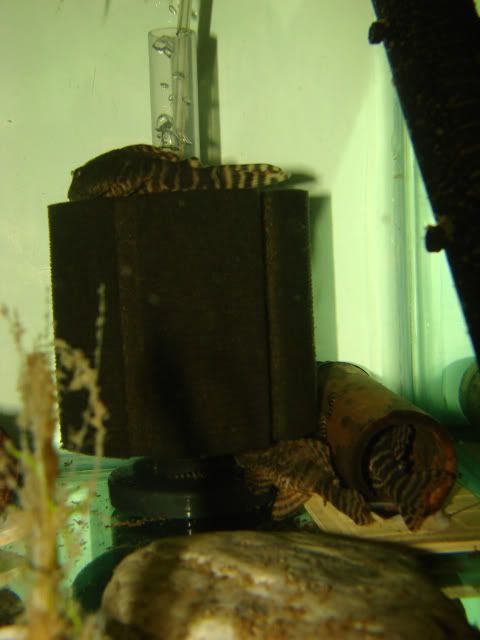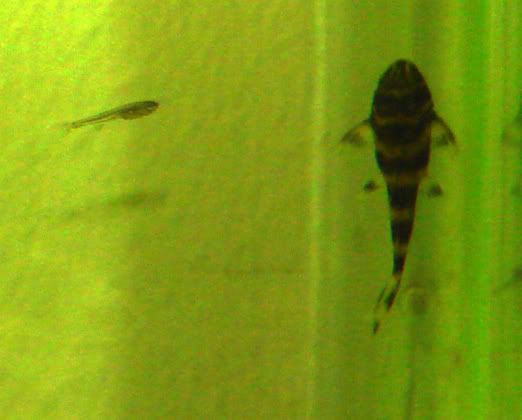Following three months of unsuccessful spawnings by my Iquito Tiger Plecos I tried something different - raising the mouth of the cave by a couple centimeters using a flat stone (for stability). This helps the father keep the eggs in the cave when cleaning house. I followed my regular routine of spawning triggers which include cold water changes and the feeding of beef heart, as well as the lowering of the water level to allow the canister filter to provide a rainfall effect and could once again see the father guarding a clutch of eggs and did my best NOT to look in the cave and disturb him during the 5 or 6 days of incubation which has always previously ended in disaster as I never quite found the eggs before consumed by the females (and possibly the males too).
A few days ago I was pleased to see the first of a decent batch of fry and I'm currently doing my best to raise them with as few casualties as possible.
Tank shot
Alpha Male in cave with fry, 3 or 4 fry can be seen on and around cave and sponge filter. Omega Female is on top of sponge filter and Alpha Female is between cave and filter.
A full size pic can be viewed here

In this photo you may notice a few requirements for any breeding tank.
1) Sponge Filter - Excellent simple filtration for a tank that will contain small fry. The fry have little to no chance of perishing with this device but special care must be taken with catfish species which may attempt to enter the air outlet at the top and get stuck. This can be solved by using gravel in air outlet tube.
2) Bamboo or PVC cave attached to base - A mobile home for your pleco dad. Easily crafted out of PVC though bamboo gives your poppa something to nibble on when he's hungry but the end will eventually be eaten away. Do not recommend using any kind of glue aside from a bit of aquarium silicone to gum the bits together - this is not permanent as silicone will eventually let go, but it's better than anything else.
3) Heater with guard - Heaters are often used as spawning sites and hiding places so a simple plastic sleeve is a great way to protect from loss.
Thanks to the other pleco fanatics out there for your support in making this happen

P.S. - the fry in the very first pic of this thread is just a leopard danio. There's about a hundred in there with the L226s at present.
 [IMG:420:599]http://i15.photobucket.com/albums/a378/ ... leview.jpg[/img]
[IMG:420:599]http://i15.photobucket.com/albums/a378/ ... leview.jpg[/img]





